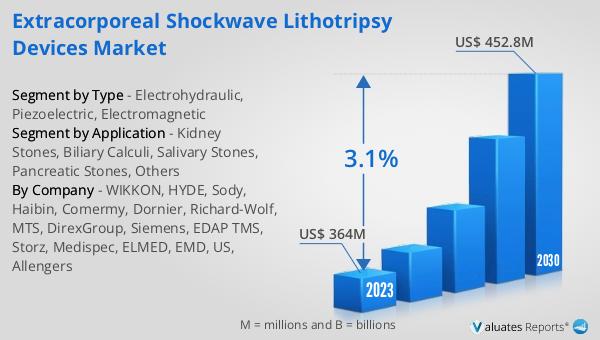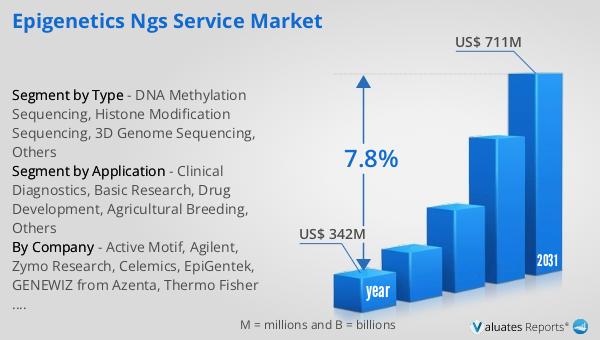What is Global Extracorporeal Shockwave Lithotripsy Devices Market?
The Global Extracorporeal Shockwave Lithotripsy (ESWL) Devices Market refers to the worldwide industry focused on the development, production, and distribution of medical devices that use shockwaves to break down stones in the body. These devices are primarily used to treat kidney stones, but they can also be applied to other types of stones such as those found in the gallbladder, salivary glands, and pancreas. The market is driven by the increasing prevalence of urolithiasis, or stone formation, which is influenced by factors such as dietary habits, lifestyle changes, and genetic predispositions. ESWL devices offer a non-invasive treatment option, which is a significant advantage over traditional surgical methods. This market is characterized by technological advancements, with manufacturers continuously innovating to improve the efficacy and safety of these devices. The demand for ESWL devices is also supported by the growing awareness among patients and healthcare providers about the benefits of minimally invasive procedures. As healthcare systems worldwide strive to improve patient outcomes and reduce recovery times, the adoption of ESWL devices is expected to rise, contributing to the market's growth.

Electrohydraulic, Piezoelectric, Electromagnetic in the Global Extracorporeal Shockwave Lithotripsy Devices Market:
Electrohydraulic, piezoelectric, and electromagnetic are the three primary technologies used in extracorporeal shockwave lithotripsy devices, each with its unique mechanism for generating shockwaves. Electrohydraulic lithotripsy devices utilize a spark gap electrode submerged in a water bath to create shockwaves. When a high-voltage current is applied, it generates a spark that vaporizes the surrounding water, producing a shockwave. This shockwave is then focused onto the stone, causing it to fragment. Electrohydraulic devices are known for their high energy output and ability to break down even the hardest stones. However, they can be less precise in targeting, which may lead to collateral damage to surrounding tissues. Piezoelectric lithotripsy devices, on the other hand, employ piezoelectric crystals that change shape when an electric current is applied. These crystals are arranged in a dome-shaped configuration, and when activated, they generate shockwaves that converge at a focal point. Piezoelectric devices are praised for their precision and ability to target stones with minimal impact on surrounding tissues. They are generally quieter and produce less pain during treatment, making them a preferred choice for patients and clinicians alike. Electromagnetic lithotripsy devices use a coil and a metallic membrane to generate shockwaves. When an electric current passes through the coil, it creates a magnetic field that propels the membrane forward, producing a shockwave. This shockwave is then focused onto the stone. Electromagnetic devices are valued for their reliability and consistent performance. They offer a good balance between energy output and precision, making them suitable for a wide range of stone types and sizes. Each of these technologies has its advantages and limitations, and the choice of device often depends on the specific needs of the patient and the expertise of the healthcare provider. As the global ESWL devices market continues to evolve, manufacturers are investing in research and development to enhance these technologies, aiming to improve patient outcomes and expand the range of treatable conditions.
Kidney Stones, Biliary Calculi, Salivary Stones, Pancreatic Stones, Others in the Global Extracorporeal Shockwave Lithotripsy Devices Market:
The usage of Global Extracorporeal Shockwave Lithotripsy Devices Market spans several medical conditions, primarily focusing on the treatment of stones in various parts of the body. Kidney stones are the most common application for ESWL devices. These stones form when minerals in the urine crystallize and can cause severe pain and urinary tract obstruction. ESWL offers a non-invasive solution by using shockwaves to break the stones into smaller fragments that can be easily passed through the urinary tract. This method is preferred over surgical options due to its minimal recovery time and reduced risk of complications. Biliary calculi, or gallstones, are another area where ESWL devices are utilized. Gallstones can block the bile ducts, leading to pain and potential infections. While not as common as kidney stones, the use of ESWL in treating gallstones provides an alternative for patients who are not suitable candidates for surgery. Salivary stones, which occur in the salivary glands, can also be treated with ESWL devices. These stones can obstruct saliva flow, causing pain and swelling. ESWL offers a non-invasive approach to fragment these stones, allowing them to be expelled naturally. Pancreatic stones, though less common, can cause significant health issues, including pancreatitis. ESWL devices can be used to break down these stones, alleviating symptoms and preventing further complications. Beyond these specific conditions, ESWL devices are also employed in treating other types of stones and calcifications in the body. The versatility and non-invasive nature of ESWL make it a valuable tool in modern medicine, offering patients effective treatment options with minimal discomfort and downtime.
Global Extracorporeal Shockwave Lithotripsy Devices Market Outlook:
The global market for Extracorporeal Shockwave Lithotripsy Devices is anticipated to experience growth, with projections indicating an increase from $377 million in 2024 to $452.8 million by 2030. This growth is expected to occur at a Compound Annual Growth Rate (CAGR) of 3.1% over the forecast period. A significant factor contributing to this market expansion is the concentration of market share among the top five manufacturers, who collectively hold over 30% of the market. This indicates a competitive landscape where leading companies are likely to drive innovation and influence market trends. The projected growth reflects the increasing demand for non-invasive medical treatments, as well as advancements in technology that enhance the efficacy and safety of ESWL devices. As healthcare providers and patients continue to seek effective and minimally invasive solutions for stone-related conditions, the market for ESWL devices is poised to expand. The focus on improving patient outcomes and reducing healthcare costs further supports the adoption of these devices. With ongoing research and development efforts, the market is expected to witness the introduction of new and improved devices, catering to a broader range of medical needs and conditions.
| Report Metric | Details |
| Report Name | Extracorporeal Shockwave Lithotripsy Devices Market |
| Accounted market size in 2024 | US$ 377 million |
| Forecasted market size in 2030 | US$ 452.8 million |
| CAGR | 3.1 |
| Base Year | 2024 |
| Forecasted years | 2025 - 2030 |
| Segment by Type |
|
| Segment by Application |
|
| Segment by Region |
|
| By Company | Sody, Haibin, Comermy, Dornier, Richard-Wolf, MTS, DirexGroup, Siemens, EDAP TMS, Storz, Medispec, ELMED, EMD, US, Allengers |
| Forecast units | USD million in value |
| Report coverage | Revenue and volume forecast, company share, competitive landscape, growth factors and trends |
